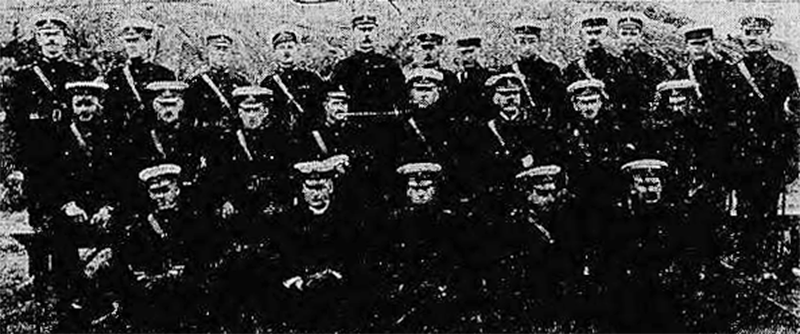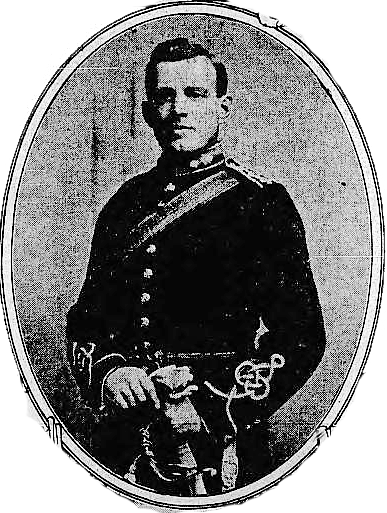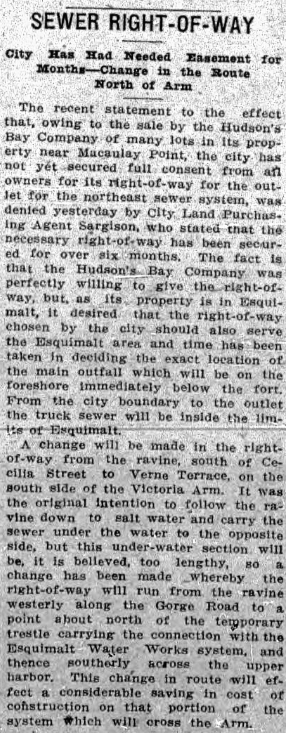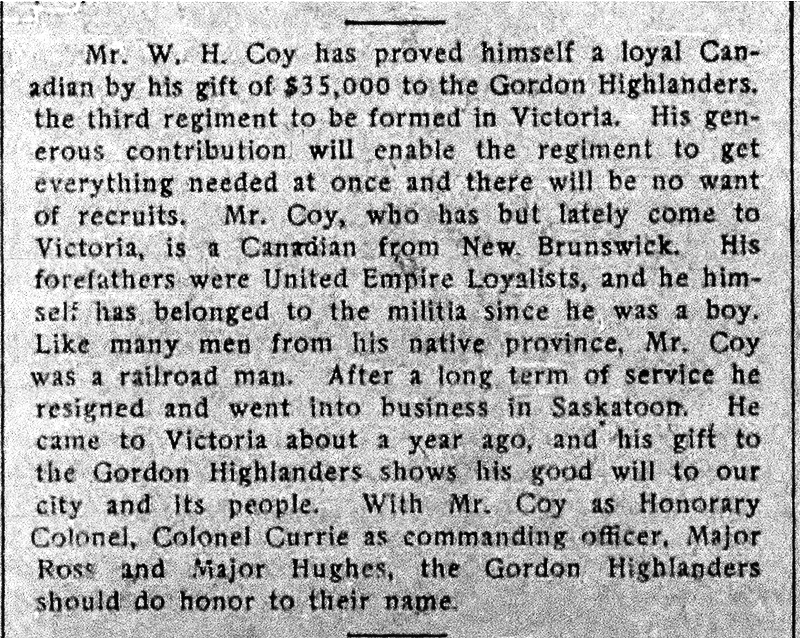 |
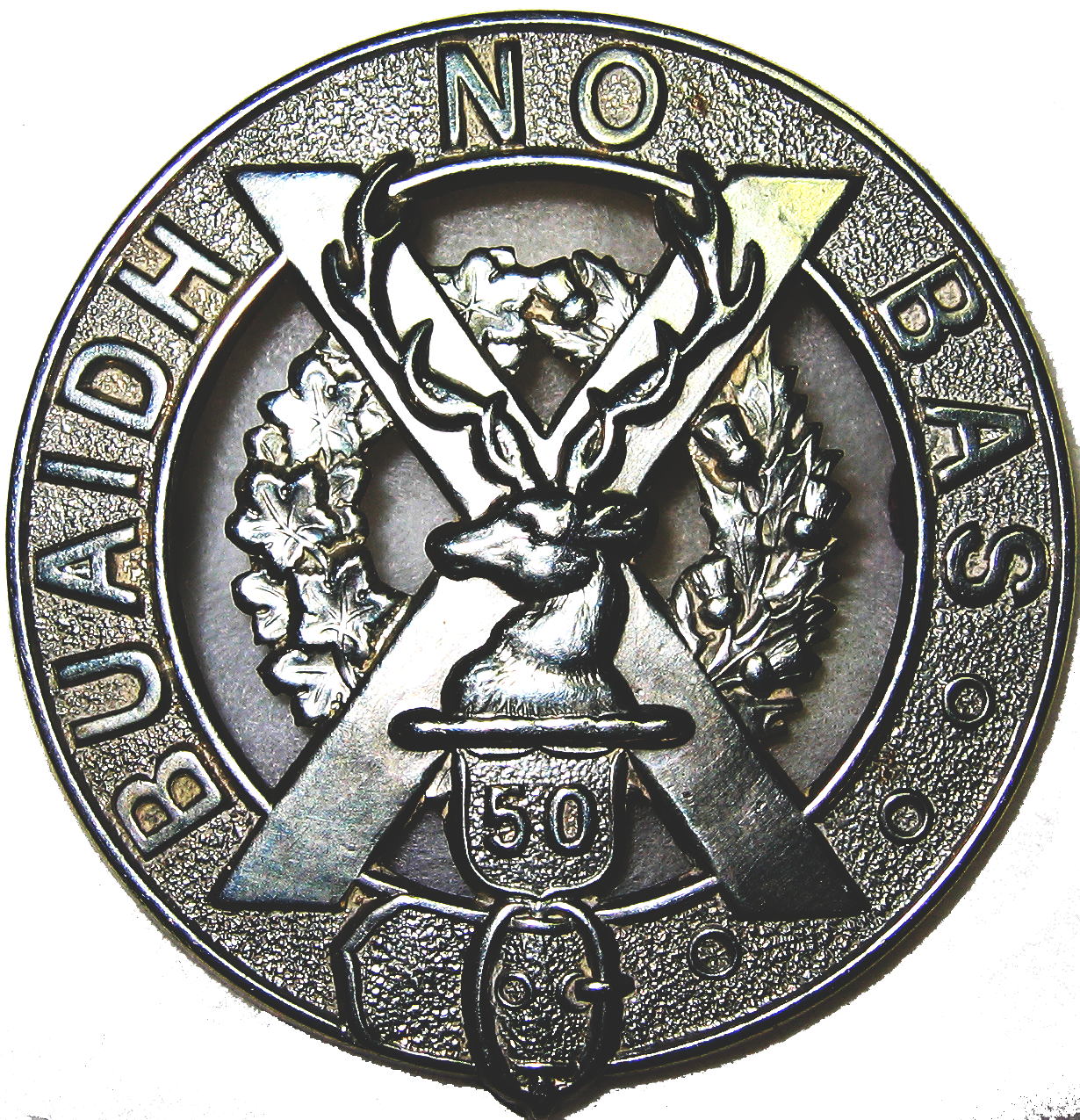 OPCMHVisitor No.: |
HISTORY OF WORK POINT BARRACKSby Jack BatesPART 4 — 1907 to 191819135th REGIMENT SGT’S MESS This photo kindly contributed by Karen (Radley) Rennie of Esquimalt, her grandfather MW MANN, back row, three from left, was a pre WW 1 militiaman and WW1 veteran; he is buried in St. Luke’s Anglican Church Cemetery in Saanich. Click here to view photo as a PDF. Victoria Times INSPECTING OFFICERS EXAMINE DEFENCES General Pleased With Fifth Regiment Marksmanship; See Rodd Hill Battery General Sir Ian Hamilton expressed himself last evening as being pleased with the excellent gunnery work done by the Fifth Regiment at Macaulay Plains and Esquimalt. The general and Col. Hughes went directly to Esquimalt when they returned from Sidney, and some thirty rounds were fired from the six inch and twelve pounder guns in the forts. “There was a high wind blowing and every target was smashed, which I consider very creditable work indeed for non-regulars” stated the general. The shooting was done from the guns at Macaulay Plains, Duntze Head, Black Rock and Belmont. As a result of the minister’s visit to the Rodd Hill Battery, it is stated, that instructions will be issued to change the mounting of the new 9.2 guns, which were placed in position last year. These guns are the largest in the vicinity, having a bore of 9.2 inches. Col. Hughes also saw the site proposed for the new graving dock, and expressed himself well satisfied with the site for the purpose. The principal visitors were entertained at the Union Club in the evening by G.H. Barnard, M.P., and General Hamilton and Col. Hughes, with their staffs, left on the morning boat for Vancouver en route east. They will stay off in Vancouver for a day and will then proceed to Calgary. Their next inspections will be made at Battleford, where they go from Calgary. At 2:30 No. 2 company held a competition practice with six inch guns, firing five rounds per gun, and at 5:30 p.m. No. 3 company will test the 12 pounder field guns, in three series. Tomorrow in accordance with custom the big muster parade will be held, and there is every expectation of a large number of visitors at Macaulay Point during the day. No. 1 company, which is at Esquimalt, and therefore will not be effected by the manoeuvres of Monday and Tesday, has a competitive practice with the quick firing guns set for six o’clock. No. 2 company is particularly anxious to exhibit its marksmanship, as the conditions prevalent yesterday prevented the anticipated display at the fort. The sea was too rough to allow the launch drawing the targets to reach the range point with safety. July 2, 1913 NEW GUNS FOR FIFTH Lt. Col. Currie Announces That Two 18 Pounders Will Come Here Two of the new 18 pounder breach loading field guns which the Militia Department has ordered from the Old Country will be sent out to the Fifth Regiment of Victoria, according to the statement made by Colonel Currie this morning. Colonel Williams, the Adjutant-General of Canada, who accompanied the Minister here last week, promised Col. Currie that at least two of these new guns would be given to the crack local regiment, as he said it was a great pity that so fine a regiment should be drilling with obsolete artillery. When the two big 9.2 inch guns at Rodd Hill are levelled and the necessary work is done to make them ready for use it is possible that one of the Fifth’s companies will be attached to them, so creditable has been their showing with the other inferior artillery.
May be Riding School The wish of the Department has always been that at least one company of the Fifth be trained to use field guns in what is known as moveable armament work. The guns are the same as those used by Field Artillery regiments, but the use they are put to is different. Saddles and harness have been sent along by the Department for this work and it is expected that a riding instructor will be appointed to give the men of No. 3 Company classes in this necessary branch of field artillery work. This company has so far been working with a battery of 12-pounder breach loading guns of an out-of-date design. The new 18 pounders are the very latest thing in breach loading field guns.
Daily Colonist During the South African was letters sent home by British soldiers had to pass through the hands of a censor. A certain private had sent four or five letters home, and portions had been obliterated by the censor, and were therefore illegible on their arrival at their destination. He decided to even accounts with the censor, and at the foot of the next letter he wrote: “Please look under the stamp.” At the censor’s office the letter was opened and read as usual. The officer in charge spent some time in steaming the stamp from the envelope, but his feelings can be better imagined than described when he read these words: “Was it hard to get off?” The drummer had been bragging about his achievements for a goodly time, and finally, the meek little man in the corner piped up. “Excuse me,” he said, “but perhaps you can tell me why you gentlemen are called drummers?” “Well, why shouldn’t we be so called? We drum up trade, don’t we?” “I know,” said the meek little man, “but the drum is not a wind instrument.” July 27, 1913 ECHOES OF THE PAST – ESQUIMALT OF THE OLDEN DAYS To see H.M.S. New Zealand, a first class battle cruiser of the most modern type, and one of the world’s most finished fighting machines, swinging at anchor in Esquimalt harbor is a cheering sight to pioneer Victorians who can recall the historic naval base of the Pacific Northwest when it constantly was scene of stirring activity. If it were possible within the limited compass of a short newspaper article to give in detail and in anecdotal form the story of Esquimalt as a naval centre from the time of its establishment early in the last century to the date of the fleet’s withdrawal of would make one of the most absorbing narratives imaginable. But it is impossible at such short notice to obtain the necessary data and, besides, the exigencies of space forbid. The pictures which are reproduced on this page and the sight once more, although for but a brief period, of the trim figures of naval officers in our midst and of hundreds of rollicking seamen, wearing the familiar and loved uniform of the British tar, swinging through the streets will be sufficient to bring to the minds of pioneers a vision of the past. Although there cannot be many of the old guard with us able to look back far enough to picture the Esquimalt of the early sixties, perhaps there are some who will remember the fleet which made its headquarters there at that period. Perhaps they will recollect the flying squadrons of sailing war vessels, then wonderful creations because equipped with steam auxiliary power, which paid the station a brief visit in the course of a tour of British foreign possessions. They will recollect hoe the sailors made the then little town of Victoria hum with their harmless pleasantries. Having been closely confined to their various ships for some time it was to them a source of keen delight to be able to stretch their limbs ashore. If there are none able to go this far back, doubtless there some in a position to recall a period of ten or so years later, when Lord Charles Beresford, who now is taking an active part in the battle of the Old Country’s political arena, served here as a midshipman. Incidentally it may be stated, in this connection, that when Lord Beresford visited Victoria again a couple of years ago he referred in terms of the greatest affection to “good old Esquimalt.” “Won’t you give some of your boyhood reminiscences while on the Pacific Northwest Station?” the distinguished visitor was asked by a newspaper representative. “Ah,” the elderly but still hale and rugged seaman replied reflectively, “I do not think I’ll venture. I’m afraid I was guilty of some pranks that better not be published.” And he laughed. Few old time Victorians will fail to place H.M.S Repulse, a wooden ship it is true, but one of the highest class of her time. Then there was H.M.S. Shah. Her arrival at Esquimalt, it will be remembered, was the occasion of considerable excitement, not only on the station and in this city but throughout the world, for her commander and officers brought news of having a brush with the Huascar, a Peruvian ironclad, in the southern seas while en route north. This event is a matter of history and the details are well known. That the Britishers acquitted themselves with credit is a foregone conclusion and, of course, the ship was given just as hearty a welcome as the then rather sparsely populated section of southern Vancouver Island could accord.
In talking over old Esquimalt times the name of Sir Michael Culme Seymour, who was the admiral in charge about 1887, recurs so frequently that there can be no question but that he was one of the most popular of the western commanders. Although he maintained the proper dignity of his high office he possessed the indomitable Britsj spirit that has won for the Empire the proud position she now occupies. With it there was a strong democrative tendency that won for him the affection and esteem, not, only of those with whom he came in intimate contact, but his sailors and the citizens of Voctoria. During Admiral Seymour’s regime the flagship, for a part of the time, was H.M.S. Triumph. He always had a fleet of four commissioned vessels. It was in this period that the Queen Victoria Jubilee occurred, which was made the occasion for a picturesque military and naval display at Beacon Hill Park. The sailors, cheered to the echo by practically the entire population, marched through the streets on their way to the scene of the manoeuvres. With them were the soldiers of the garrison. The latter also made an impressive spectacle. But it was the sailors who were most admired. For some reason they, above the representatives of all the other services, possessed the warm regard of Victorians of the early days. The attack of the jolly tars on Beacon Hill which was held by the soldiers, and all the other incidents of that memorable day are history that so impressed the public that those who witnessed will readily recall them. It may be mentioned, however, that there were several other well known officers identified with the day’s activities. Admiral Heneage was here to relieve Admiral Seymour. On the military side there was Major Peters, now Colonel Peters, and only a few years ago in charge of Work Point barracks. All three participated in the manoeuvres. Sir Mathew Begbie also took a prominent part in the celebration. Major Peters, in those days, was quite a hand in the composition of doggerel, and so enthused was he over the success of the affair that he was impelled to write a series of verses, which were published and created a great deal of amusement. Two lines are recollected, which to appreciate one must bear in mind that Admiral Heneage was the victim of gout. They are:
There were a number of stories in circulation at the time in which Admirals Seymour and Heneage play the leading roles. It was said that Admiral Heneage’s attention was attracted by a peculiary shoped cupboard in Admiral Seymour’s quarters when the latter was showing him over his new home. “And what is that for?” asked Admiral Heneage. “Oh, that is where I keep my gum boots,” replied Admiral Seymour. “Gum boots!” ejaculated Admiral Heneage. “Pray what are gum boots?” “There they are,” said Admiral Seymour, indicating a huge pair of water tight hip boots of the true western type. “Oh,” commented Admiral Heneage, skeptically, adding, “But Admirals don’t wear gum boots.” “No,” was the answer, “but you’ll find them jolly useful.” Although over fifty years of age at the time, Admiral Seymour was an enthusiastic and active sportsman. One of his innovations while here was long distance running. He was in the habit of organizing long distance races from Esquimalt to Victoria at intervals, and ran in them against his officers. It was not an unusual sight for Victorians to see the competitors panting through the city’s chief thoroughfares. Strange to say the Admiral almost invariably was the victor. There was a report that the officers were of the opinion that it would not do to beat their commander, but it was only a rumor. The fact remains that the admiral obtained quite a record as a long distant runner in spite of his rather advanced age for indulgence in such a strenuous form of exercise. These are but a few reminiscences of Esquimalt in its palmy days. There are many Victorian who look back with regret and look forward with the keenest anticipations to the date when the Admiral’s policy, or perchance, the policy of the Dominion government, will lead to the rehabilitation of the adjacent port as the headquarters of a squadron in active commission.
COLONIST
Daily Colonist AN INCREASE IN REGULAR FORCE Dominion Military authorities Considering Question of Fortifications Will Be Strengthened Ottawa, Aug. 23. – That there will be very shortly a large increase in the permanent force located at Esquimalt is the information given to the Colonist correspondent by high military officials. At present there are but 150 men in barracks. It is understood that the present plan is to strengthen the fortifications at Esquimalt and at the same time to increase the force so that it will be of some real value from a military standpoint. There has been a rumor current that owing to the frequent labor troubles the Militia department would likely station a force of regulars permanently at that port. This is denied by the Militia department; and it is claimed that the proposed increase of the force at Esquimalt has nothing whatever to do with the frequent industrial troubles on Vancouver Island. Strengthening Fortifications The increase of the force will be simply in line with the policy which is to strengthen the fortifications on the Coast and to make Halifax and Esquimalt powerful naval bases. New forts are already planned at Halifax and Esquimalt and the present fortifications will also likely be brought up to date. In addition to this report on the Canadian militia recently made, General Sir Ian Hamilton is preparing a report on the fortifications and defence of the Dominion. It is not expected any definite policy will be decided upon until this report has been received. COLONIST 88th REGIMENT VICTORIA FUSILIERS
COLONIST FIFTH REGIMENT ADDS TO LAURELS
November 16, 1913 The Fifth Regiment C.G.A. The year 1913 will ever be memorable in the annals of the Fifth Regiment of Canadian Garrison Artillery, as in it they have established a record of competition with all the other garrison artillery of the Dominion, which may possibly be equaled, but can never be surpassed, since the three companies carried off all the prizes, cups, and money that were competed for. Their record has already been published, but will bear repeating.
No. 2 Company took first prize for general efficiency and the Governor General’s Cup, first prize for the gun practice and the Turnbull Shield, and second prize for efficiency of personnel, with cash prizes amounting to $124.50. No. 1 Company took second prize for general efficiency and the Lansdowne Cup, second prize for gun practice and the Hugh Black Cup, and first prize for efficiency of personnel, with cash prizes amounting to $111. No. 3 Company (movable armament) took first prize for general efficiency and the Association Cup, first prize for gun practice and the Association Cup, and cash prizes amounting to $58. The Fifth Regiment, under Colonel Currie, had been for the last five years gradually working up to the climax which marks the year of his resignation of the command. In 1909 the regiment, in competition with similar corps of the Dominion, gained first, second, and third position; in 1910, first and second; in 1911, third; in 1912, first and second in coast defence companies; and first for the movable armament battery, and the extraordinary honors won this year emphasize the regret which is so generally felt throughout the regiment at the loss it will sustain by the transference of its commanding officer to another regiment. It is, however, recognized that the Fifth’s loss is a gain to the militia of the Province, in that it will retain the services of an efficient officer for a further period of five years at least.
The Fifth Regiment may be said to be the successors of the old Victoria Volunteer Rifles, as the Canadian Gazette for October 13, 1883, contains a notice for the formation of the British Columbia Provisional Regiment of Garrison Artillery, which was to be composed of four batteries, No. 1 being stationed at New Westminster, and Nos. 2, 3 and 4 at Victoria, No. 4 being formed of No. 1 Company of the Rifle Volunteers of Victoria. Captain Charles Thomas Dupont, G.S., was appointed major commanding the regiment in Victoria, with Captain Richard Wolfenden (late R.E.) as adjutant. No. 2 Company was commanded by Captain Arthur William Jones, No.3 by Captain James Lawson Raymur, and No. 4 by Captain W.H. Dorman, and Mr. George Jay was appointed a second lieutenant in this latter company provisionally. The regiment went into its first camp in July, 1884, and in March of the next year there is reference in the official documents to the “Russian scare.” In connection with this Mr. William Atkins can remember a mass ... interest in the militia, but as a result only two volunteers came forward, which so disgusted him, that, though by no means a young man at that date, he joined the regiment next day, eventually attaining the rank of sergeant and being offered a commission. On October 28, 1885, Major Dupont was granted permission to retire and to retain his rank, and Captain R. Wolfenden took the command, being promoted to the rank of major in the following month. On May 8, 1886, the designation of the B.C. Provisional Regiment of Garrison Artillery was changed to the B.C. Brigade of Garrison Artillery, and Major Wolfenden promoted to the rank of Lieut. Colonel. In the same year Orderly Sergeant J.J. Plummer, of No. 4 Company, was selected to represent the brigade on the Canadian Artillery team at Shoeburyness. In May, 1893, the name B.C. Brigade of Garrison Artillery was changed to the B.C. Battery of Garrison Artillery, and in 1894 the new drill hall was opened. In this year Nos. 1, 2 and 3 companies were stationed at Victoria, with the 5th at Vancouver, and on August 1, 1896, a drumhead service was held at Beacon Hill. This year the Canadian team, which won the Queen’s prize at Shoeburyness, contained two Fifth Regiment men, Corporal W.H. Lettice (now the quartermaster of the regiment) and Sergeant A.J. Thomas. In 1896 Colonel Prior, who had commanded the regiment since 1888, was succeeded by Lieut. Col. Gregory, who in turn was followed in 1901 by Major R.R. Monro, under whom Lieutenant Ridgeway Wilson served as active adjutant. The following year Lieut. Col. Munro resigned, and, three senior officers waiving their claims to promotion, Captain J.A. Hall took over the command on February 28, 1903, and was speedily advanced to the rank of Lieut. Colonel, and continued at the head of the regiment until succeeded by Lieut. Colonel Currie in 1909. Various changes in the composition of the regiment have taken place since its formation, but the dates of these are not always available. As has been stated, the regiment started with No. 1 Company at New Westminster and three companies at Victoria. Later on, in the regimental records it is found that the Victoria companies were Nos. 1, 2 and 3, and Nos. 4 and 5 were on the mainland, the regiment being divided into an Island Battalion, No. 1, and No. 2 Battalion with headquarters on the mainland. Ultimately the second battalion disappeared in favor of the 6th Connaught Rifles, and, the present Fifth Regiment is the sole representative of the old Brigade of Garrison Artillery. When the South African war broke out, some twenty five men, under Captain Blanchard, helped to form a composite regiment sent out, and a memorial in the drill hall records that captain M.G. Blanchard, Sergeant W.J. Scott, Gunners J. Todd, J. ……. ……..Queen and country in 1900.
November 19, 1913 LETTERS TO THE EDITOR The Gallant Fifth Sir, - On reading your very interesting article in Sunday morning’s Magazine supplement regarding the Fifth Regiment, Canadian Garrison Artillery, it struck me that as a matter of back history, there are one or two matters that might be referred to in order that the complete facts might be known to those interested. It is stated in the article referred to, that the Fifth Regiment may be said to be the successors of the old Victoria Volunteer Rifles, and reference is made to the Canadian Gazette for October 1883, which would lead one not conversant with the facts, to believe that there was no artillery regiment in Victoria prior to 1883. Such is not the case as a corps called the Victoria Garrison Artillery, had been in existence for some time previous to 1883, and which I had the honor of joining in the year 1879, the artillery being at that time under Capt. Dupont, and an entirely separate corps in the volunteers. Further on in the article it is stated that the regiment went into its first camp in July 1884. We presume this refers to the Fifth Regiment, but the fact remains that the Victoria Garrison Artillery went into camp at Beacon Hill in the year 1880, four years previous to the date given in the article. These statements I know can be corroborated by Mr. A.G. Hargison and many others who were with me, members of that regiment. H.Kent COLONIST WHEN SHALL THEIR GLORY FADE? These articles are about members of the British Campaigners' Association in Victoria who took part in Crimean and Indian mutiny campaigns.
Article 1 (Large PDF) CITY SEWER R/W
50th GORDON HIGHLANDERS
December 14, 1913 Growing Importance of High School Cadet Corps Cadet Corps of the Public Schools Rapidly Assuming Proportions Which Auger Well The Cadet Corps attached to the public schools of Victoria are rapidly assuming proportions which auger well for the provision of trained men in the next generation, whether its members go on, as some have done, to militia regiments, the permanent forces of the Dominion or the Indian army, or, at the expiration of their school life, enter civilian pursuits. The high school cadet corps, one of the first to be established in Victoria, was authorized in 1903 and organized in the following year. It began as a company of fifty under the command of Captain Cobbett, with two lieutenants, messrs. L. NcRae and Burgess; and from its inception to the present day has had the advantage of the help of Lieutenant A. Mulcahey, R.C.A., as its permanent instructor. Captain Cobbett afterwards joined the 5th Regiment, and later obtained a commission in the Royal Canadian Artillery, in which corps he is now serving as a lieutenant at Halifax. Other commanding officers have been Captain Hartman and Dowler, both of whom are applying for commissions in militia regiments in the city, and among other officers of the corps who now hold H.M. commission are Captains A.B. Boggs and Herbert Boggs, the former of whom recently won a commission in the Indian Army after leaving the R.M. College at Kingston, and was gazetted to the 29th lancers (Deccan Horse) and the latter is at present a lieutenant in the 88th Fusiliers of Victoria. Mr. H.B. Sargison, also a captain in the corps, now holds a commission in the 5th Regiment. Now a Battalion Today the High School Cadet Corps consists of a battalion 185 strong, which took part last year in the week’s training in the annual cadet camp at Sydney, when 1,000 cadets from all parts of the province were assembled. Other cadet units in the city schools are Central School battalion, 225 strong, a company of 50 at Esquimalt, and similar companies at the South Park, North Ward Park and George Jay schools, with another at Oak Bay. The uniform has now been changed from that of 1894 to a soft service hat with khaki tunic, knickerbockers and puttees; and every effort is being made to uniform the whole of the different units to enable them to earn the Government grant on their annual inspection. The keenness shown throughout by the boys was commented on most emphatically by Colonel Leckie at the Sidney camp last year, who stated on one occasion that he found a difficulty in satisfying the many applications made to him by boys to be employed on sentry go and extra duties of that nature. Photographs: Lt. A. Mulcahey R.C.A. Instructor High School Cadet Corps Since Foundation. |
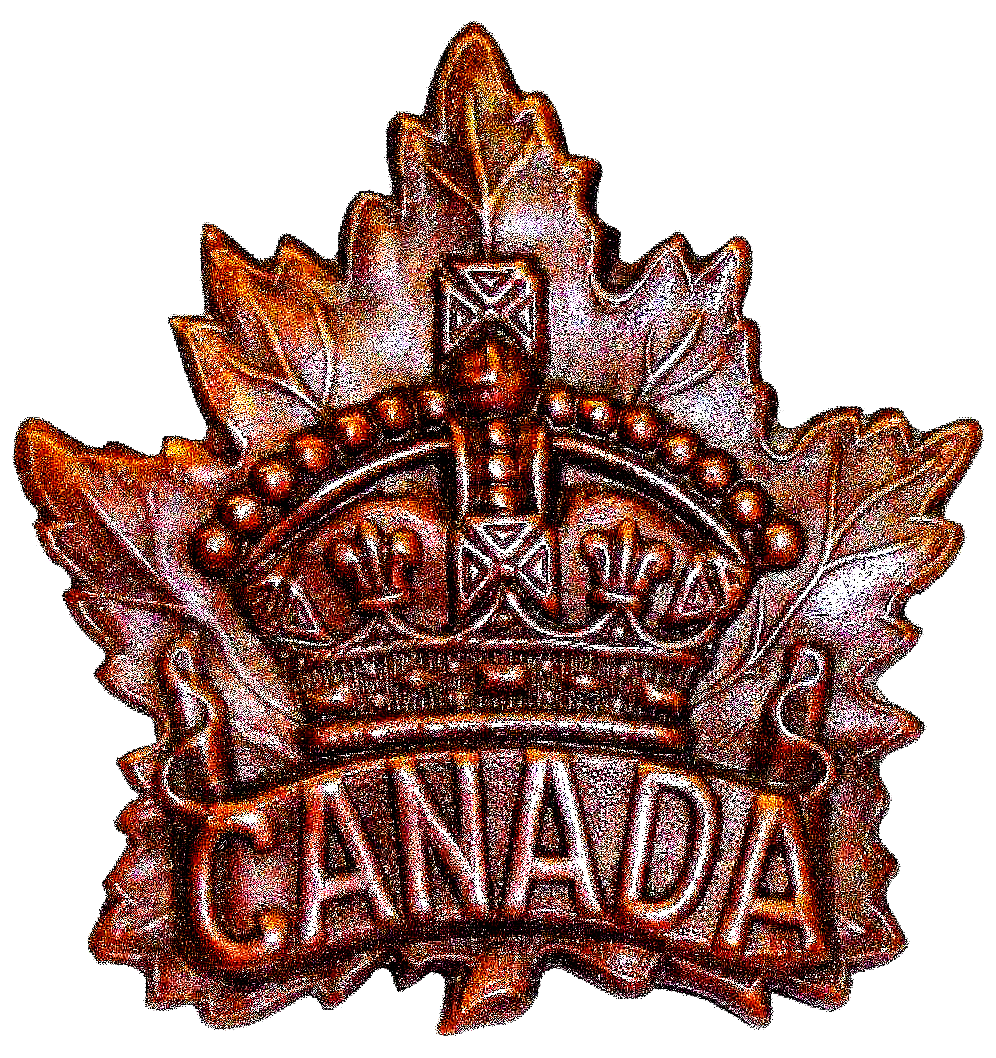
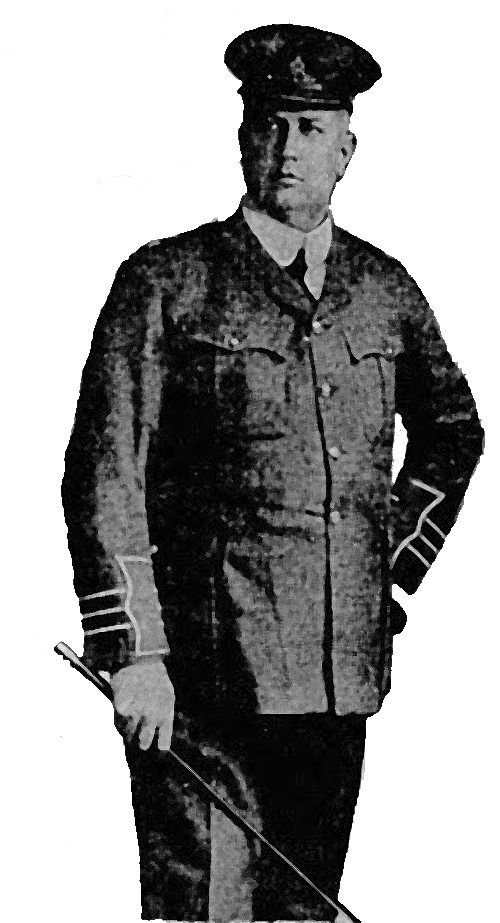
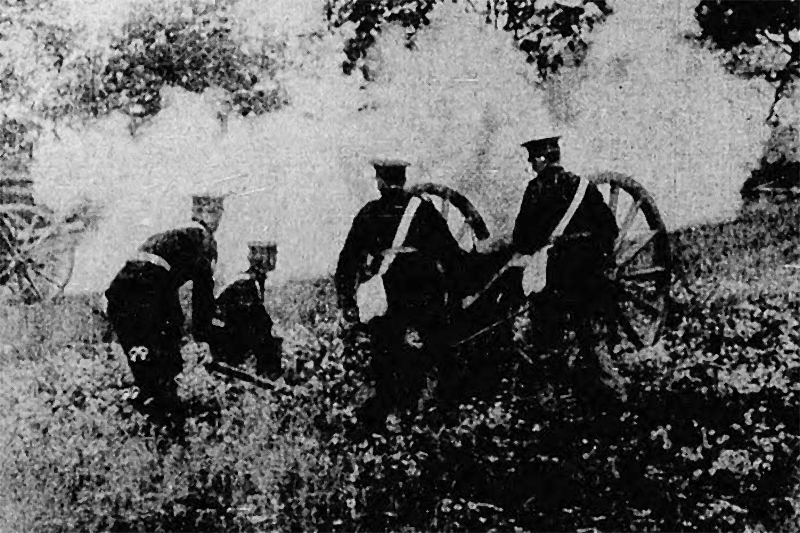
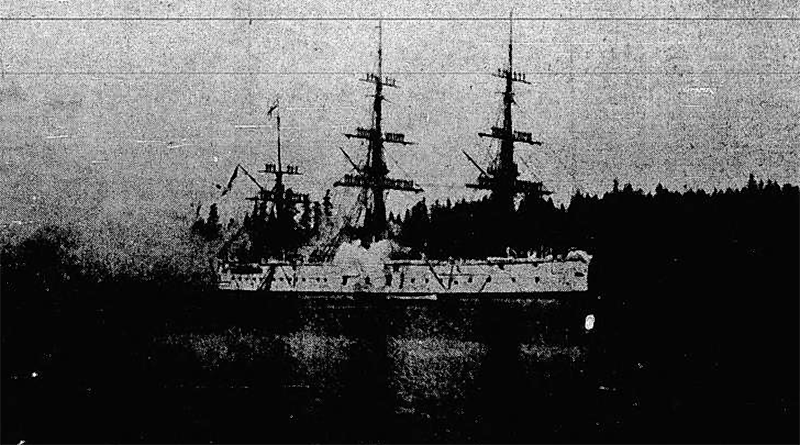
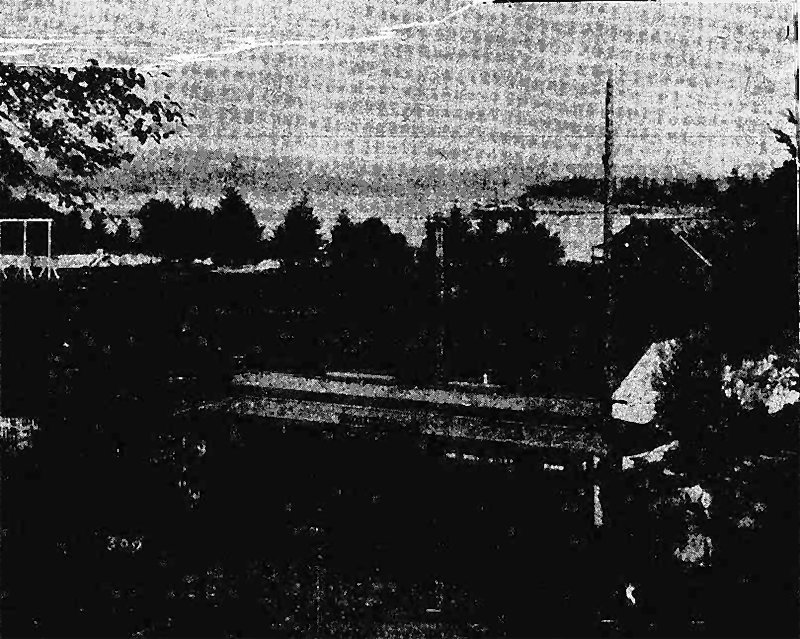
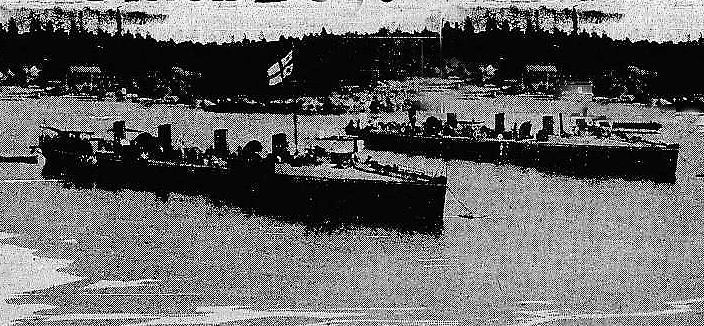
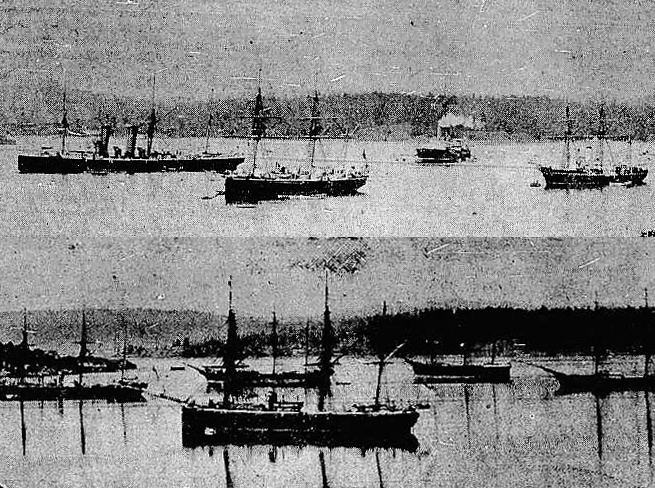
.jpg)
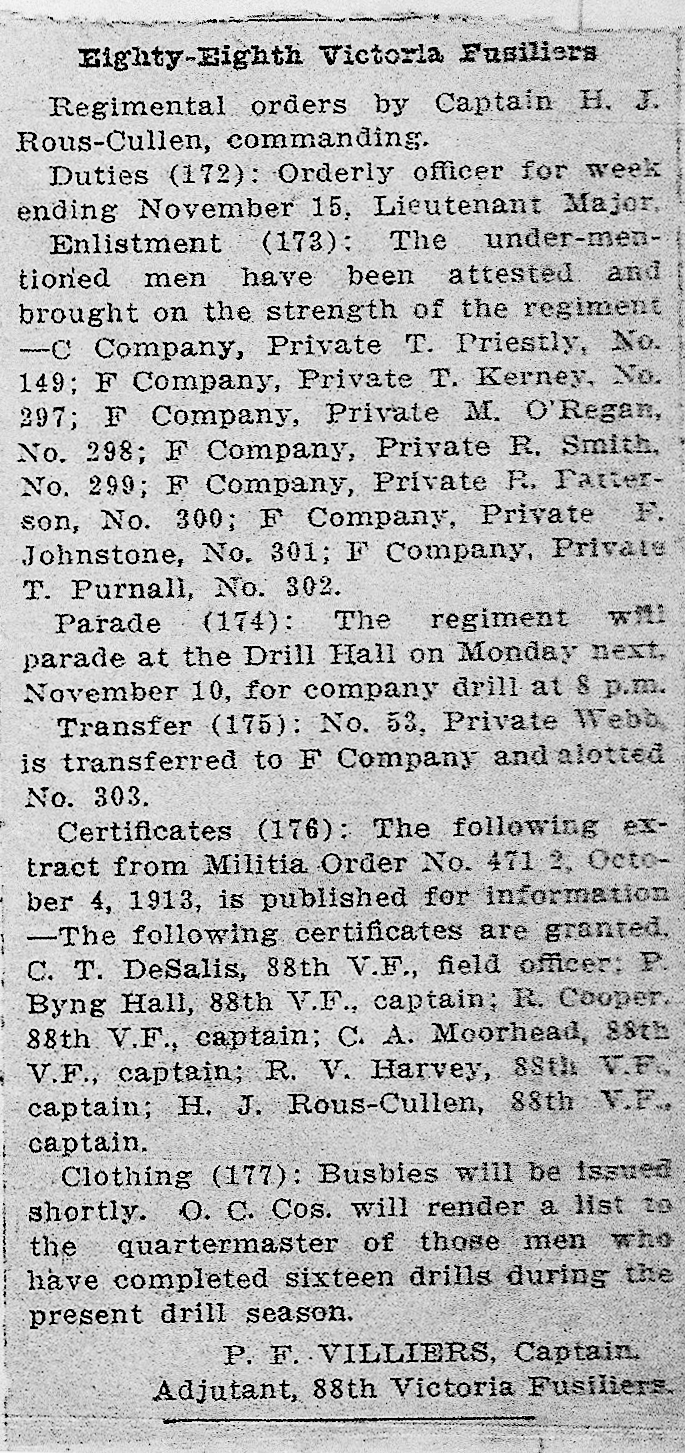
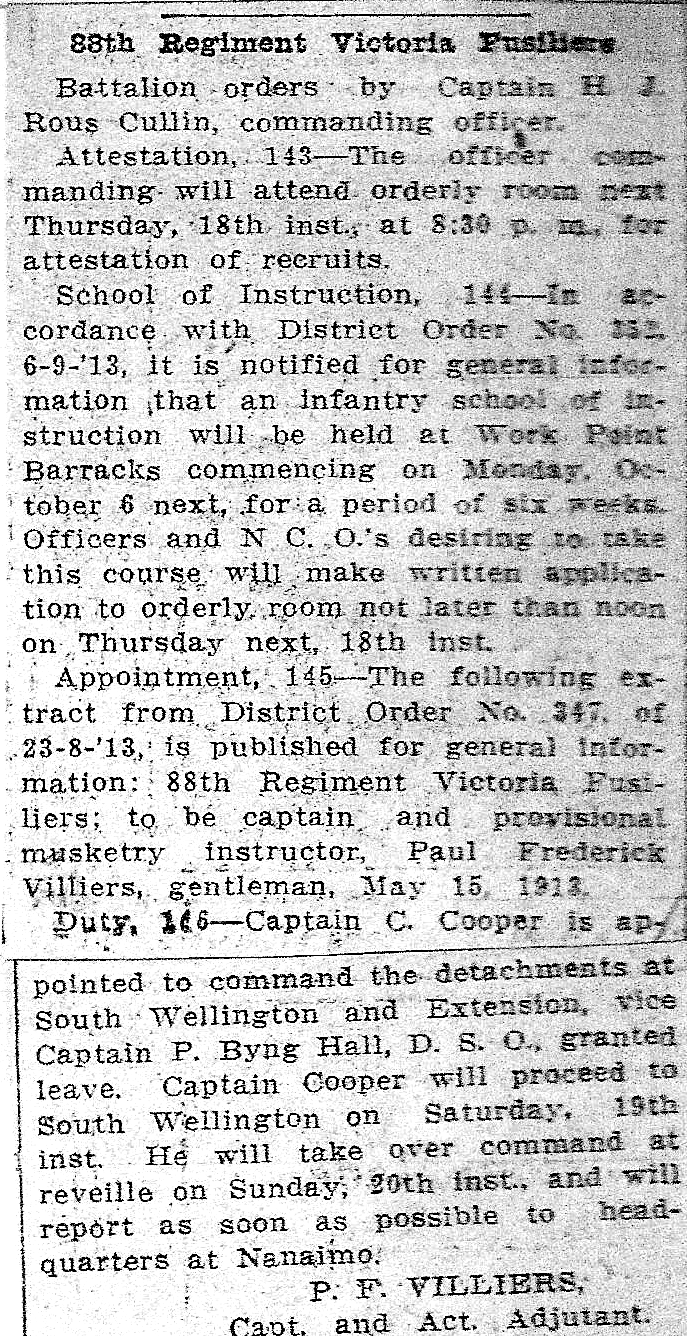
-1.png)
-2.png)

